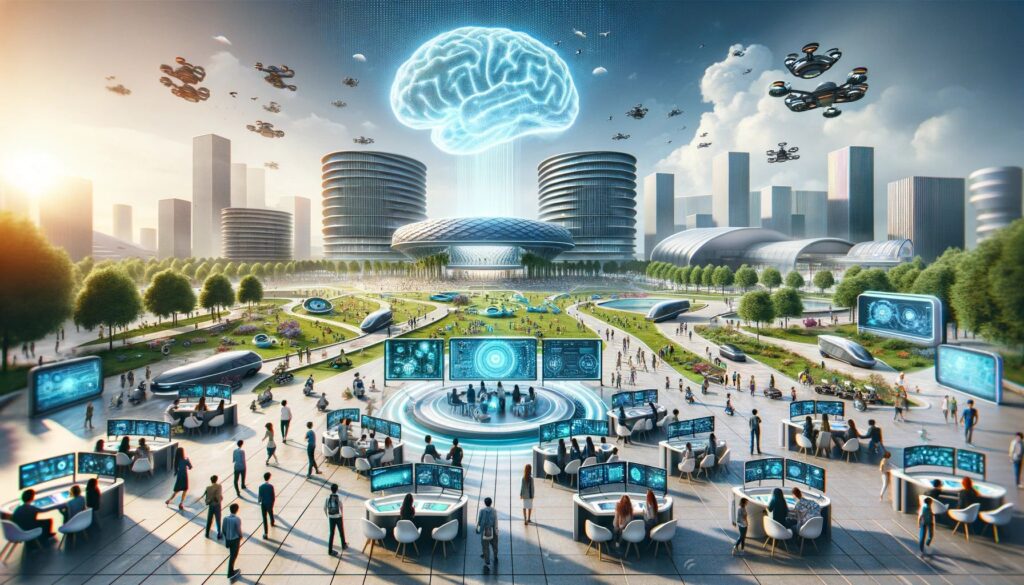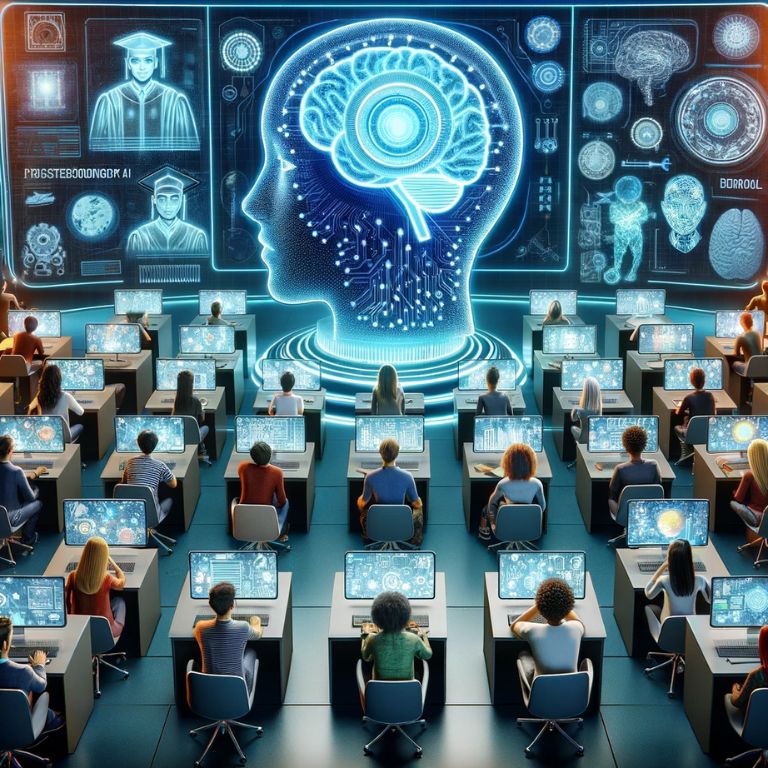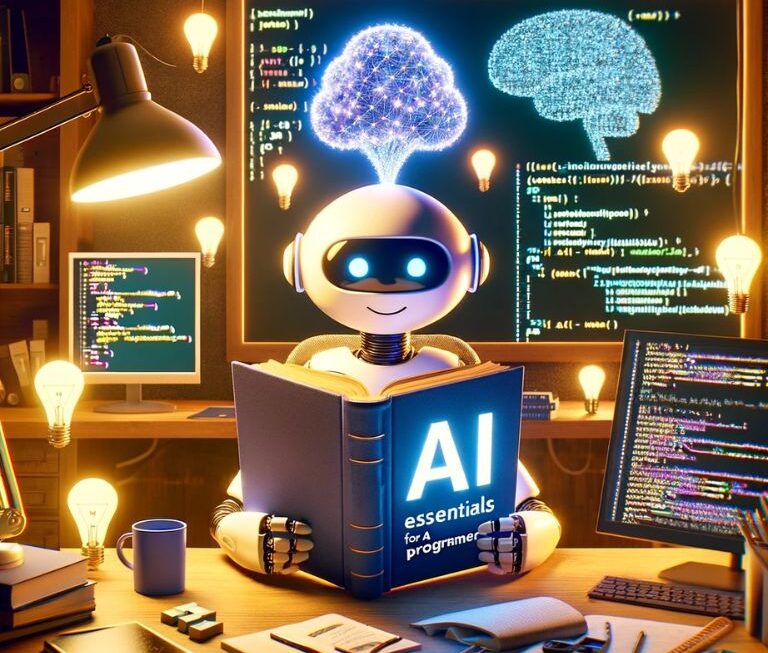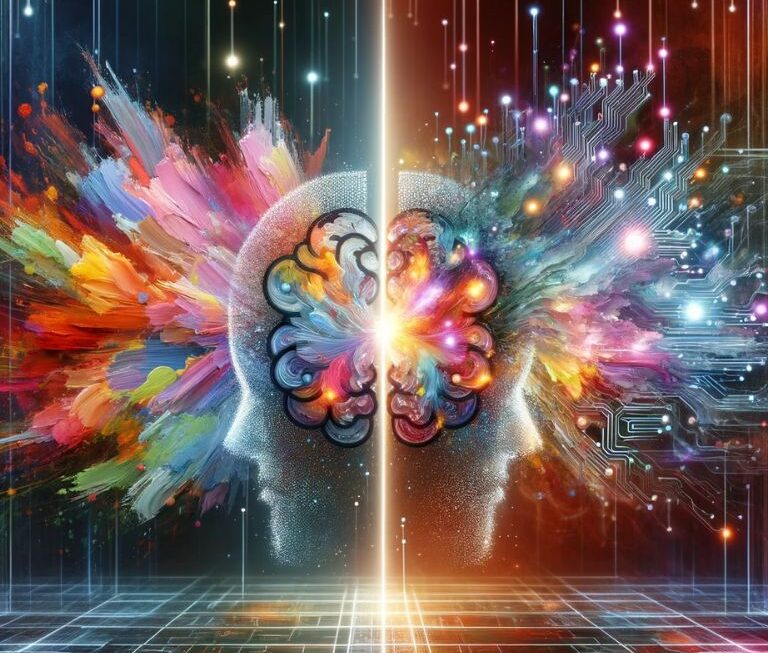The integration of Artificial Intelligence (AI) into various sectors has marked a significant milestone in technological advancement. In the realm of postsecondary education, the emergence of Generative AI is not just a fleeting trend but a transformative force reshaping the educational landscape. This section delves into what Generative AI is and its growing significance in higher education settings.
Understanding Generative AI
Generative AI refers to a subset of artificial intelligence technologies that can generate new content, ideas, or data based on the learning from existing datasets. Unlike traditional AI, which is often limited to specific tasks, Generative AI can create novel outputs, such as text, images, and even code, that were not explicitly programmed into it. This is achieved through advanced machine learning models like neural networks, which enable the AI to ‘learn’ patterns and structures from large amounts of data.
The Significance of Generative AI in Education
The application of Generative AI in postsecondary education presents a paradigm shift in both teaching and learning processes. For educators, it offers tools for creating more dynamic and engaging content, personalized lesson plans, and efficient assessment methods. Students benefit through customized learning experiences tailored to their individual learning styles and pace. Additionally, Generative AI can facilitate research by analyzing vast datasets, predicting trends, and generating new hypotheses or research questions.
Key Applications in Postsecondary Settings
- Personalized Learning: Generative AI can analyze a student’s performance and learning habits to create personalized study materials and recommendations.
- Content Generation: Educators can use AI to generate teaching materials, quizzes, and even interactive content that can adapt to the learning progression of the class.
- Research Assistance: For postgraduate students, AI can assist in data analysis, hypothesis generation, and even writing research papers.
- Language Translation and Assistance: This is particularly beneficial in linguistically diverse educational settings, making learning more accessible to non-native speakers.
The Rise of AI-Enhanced Learning Environments
The adoption of Generative AI is not just about the technology itself but also about creating a more effective and inclusive learning environment. AI tools can help bridge gaps for students who might have different learning needs or face language barriers. Moreover, it allows educators to focus more on interactive and student-centered teaching by automating routine tasks.
| Year | Development in Generative AI | Impact on Education |
| 2018 | Introduction of advanced language models | Enhanced language learning tools |
| 2020 | AI-generated educational content | Customized learning materials |
| 2022 | AI-driven analytics for student performance | Personalized learning experiences |
Historical Context and Evolution of AI in Education
Brief History of AI in Education
The history of AI in education dates back to the 1960s with the development of early computer-assisted instruction systems. In the 1980s, the focus shifted to more intelligent tutoring systems that provided tailored feedback and instruction to students. The advent of the internet and digital learning in the late 1990s and early 2000s further expanded the possibilities, incorporating more adaptive and interactive learning technologies. The last decade has seen a significant leap, with AI becoming more sophisticated, enabling personalized learning experiences and automating administrative tasks, thereby transforming the educational landscape.
Milestones in the Development of Generative AI
- Early 2000s: Introduction of machine learning algorithms in education, laying the groundwork for future AI applications.
- 2014: The development of advanced neural network architectures, leading to more efficient learning models.
- 2016: Emergence of deep learning techniques, enhancing the ability of AI to process and learn from large datasets.
- 2018: Introduction of Generative Adversarial Networks (GANs), revolutionizing the field with the capability to create realistic images and texts.
- 2020: Breakthrough in natural language processing with models like GPT-3, offering unprecedented text generation capabilities.
- 2021: AI models began producing academic content, aiding in research and content creation for educational materials.
- 2023: Widespread adoption of Generative AI in various educational tools, leading to more personalized and interactive learning experiences.
Tools and Technologies: Generative AI in Action
Overview of Current Generative AI Tools Used in Education
The landscape of Generative AI tools in education is diverse, encompassing a range of applications from content creation to personalized learning. Tools like AI-driven content generators are now common, enabling educators to create customized learning materials swiftly. Language models, such as GPT-3, are used for creating interactive learning modules and aiding in language learning. Additionally, AI-powered analytics tools are increasingly being employed to analyze student performance data, offering insights for personalized learning paths and interventions.
Examples and Scenarios for Analysis
- AI Tutoring: Carnegie Learning and Squirrel AI offer adaptive, personalized tutoring based on student learning styles and progress.
- AI in Language Learning: Duolingo uses AI for tailored language lessons, adapting to user performance.
- AI in Academic Research: Tools like GPT-3 aid in research and writing, streamlining literature reviews and paper drafting.
- AI in Online Learning: Coursera and Khan Academy employ AI to customize learning paths, course suggestions, and content adaptation.
- AI in Essay Grading: Turnitin uses AI for automated essay scoring, providing quick feedback and reducing educators’ grading efforts.
Enhancing Teaching Methodologies with Generative AI

Innovations in Curriculum Design
Generative AI is reshaping curriculum design by introducing dynamic, adaptive content that responds to the evolving educational landscape and student needs. AI algorithms can analyze current educational trends, student performance data, and emerging industry requirements to recommend updates and enhancements to the curriculum. This ensures that the educational content remains relevant, engaging, and in line with real-world applications. Moreover, the ability of AI to generate diverse learning materials caters to different learning styles, making the curriculum more inclusive and effective.
Personalized Learning Experiences
- Adaptive Learning Pathways: AI systems can create individual learning paths for students, adjusting the difficulty level and topics based on their progress and understanding.
- Interactive Simulations and Scenarios: Generative AI enables the creation of realistic simulations and scenarios, providing hands-on experience in a virtual environment.
- Feedback and Assessment: AI tools offer instant, personalized feedback on assignments and assessments, helping students understand their strengths and areas for improvement.
- Learning Pace Adjustment: AI can adjust the pace of content delivery based on the student’s comprehension speed, ensuring no student is left behind.
AI as a Teaching Assistant
Generative AI acts as an invaluable teaching assistant, taking over routine tasks and allowing educators to focus on more critical aspects of teaching. AI tools can automate the grading of assignments, manage class schedules, and even respond to student queries, providing timely and accurate information. This not only saves time but also enhances the efficiency of the teaching process. AI-driven analytics can also aid teachers in identifying students who might need additional support, enabling early intervention. As a result, educators can dedicate more time to developing innovative teaching strategies and engaging directly with students, enriching the overall educational experience.
Student Engagement and Learning Outcomes
Impact on Student Engagement
- Increased Motivation: The use of interactive and personalized AI tools keeps students more engaged and motivated in their learning journey.
- Enhanced Interaction: AI-powered platforms facilitate greater student-to-student and student-to-teacher interaction, especially in online learning environments.
- Diverse Learning Materials: AI-generated content offers a variety of learning materials, catering to different learning preferences and keeping students interested.
- Real-Time Feedback: Instant feedback from AI tools helps maintain student engagement, allowing them to understand and correct their mistakes promptly.
Examples of Enhanced Educational Achievements
- Georgia Tech’s AI Assistant: Jill Watson, an AI teaching assistant at Georgia Tech, led to quicker student query responses and higher satisfaction rates.
- Duolingo’s AI Language Learning: Duolingo’s AI-enhanced language learning significantly increased learners’ language acquisition speed and retention.
- Knewton’s Adaptive Platform: Knewton’s adaptive learning technology improved learning outcomes by personalizing content based on each student’s performance and pace.
- Squirrel AI Tutoring: Squirrel AI’s personalized learning paths and real-time feedback significantly boosted students’ test scores.
Ethical Considerations and Challenges
Addressing Biases in AI
One of the major ethical concerns in the use of Generative AI in education is the potential for inherent biases in AI algorithms. These biases often stem from the datasets used to train the AI, which may not be diverse or representative enough. It’s crucial to continuously audit and update these systems to ensure they are equitable and free from prejudices that could affect decision-making processes, such as student evaluations or curriculum development. Efforts are underway in the AI community to develop more inclusive algorithms that represent a broader spectrum of student populations, thereby reducing bias and fostering fairness in educational outcomes.
Privacy and Data Security Concerns
- Data Protection: Ensuring that student data collected by AI systems is securely stored and protected against unauthorized access.
- Consent and Transparency: Clear communication with students and educators about what data is collected and how it is used.
- Compliance with Regulations: Adhering to laws and policies like GDPR or FERPA, which govern the use of personal data in educational settings.
- Regular Security Audits: Conducting frequent assessments and updates to security protocols to safeguard against data breaches and cyber threats.
Ethical Use of AI in Educational Settings
The ethical use of AI in education extends beyond just data privacy and bias. It encompasses the need for responsible implementation that enhances learning without replacing the human elements crucial in education. This includes maintaining a balance between automated and human-led teaching, ensuring that AI tools are used to support rather than substitute the role of educators. Additionally, there is a growing discussion about the importance of educating students about AI ethics, so they understand the technology they interact with. This approach helps in creating a more informed and ethically aware generation of students who can navigate the complexities of a tech-driven world.
The Role of Generative AI in the Future of Higher Education

Predictions and Upcoming Trends
- Increased Personalization: Further advancements in AI will lead to even more personalized learning experiences, tailoring content to individual student needs and learning styles.
- Expanded Virtual and Augmented Reality Applications: Use of Generative AI in VR and AR for immersive learning experiences, simulating real-world environments and scenarios.
- Greater Integration with Research: AI will play a more significant role in academic research, aiding in data analysis, hypothesis generation, and experimental simulations.
- Ethical AI Education: A rise in courses and modules dedicated to AI ethics, ensuring that future generations are well-equipped to use and manage AI responsibly.
- Collaborative AI Systems: Development of AI systems that can collaborate with both students and educators, enhancing creativity and innovation in the learning process.
- AI in Administrative Tasks: Further automation of administrative tasks in educational institutions, leading to more efficient management and operations.
Preparing Educators and Students for an AI-driven Future
As the landscape of postsecondary education continues to evolve with Generative AI, it’s imperative to prepare both educators and students for this shift. This preparation involves training educators not only in using AI tools effectively but also in understanding their underlying mechanisms and ethical implications. For students, integrating AI literacy into the curriculum is crucial, equipping them with the skills to interact with and leverage AI technologies effectively in their learning and future careers. Furthermore, fostering a culture of continuous learning and adaptability will be key, as the field of AI is rapidly progressing, and staying abreast of the latest developments will be essential in an AI-driven educational environment.
Conclusion: The Transformative Potential of Generative AI
The integration of Generative AI into postsecondary education represents a transformative shift in pedagogy, promising personalized learning, heightened student engagement, and streamlined administration. While offering vast potential for inclusivity and effectiveness, it also poses ethical dilemmas. This journey necessitates collaboration among educators, students, technologists, and policymakers to maximize its benefits while addressing challenges. As Generative AI evolves, it opens new vistas for learning, teaching, and research. Success hinges on embracing change, cultivating an innovative and ethical culture, and preparing for an AI-infused educational future. Despite complexity, this journey holds the promise of a more adaptive, engaging, and insightful educational landscape.




